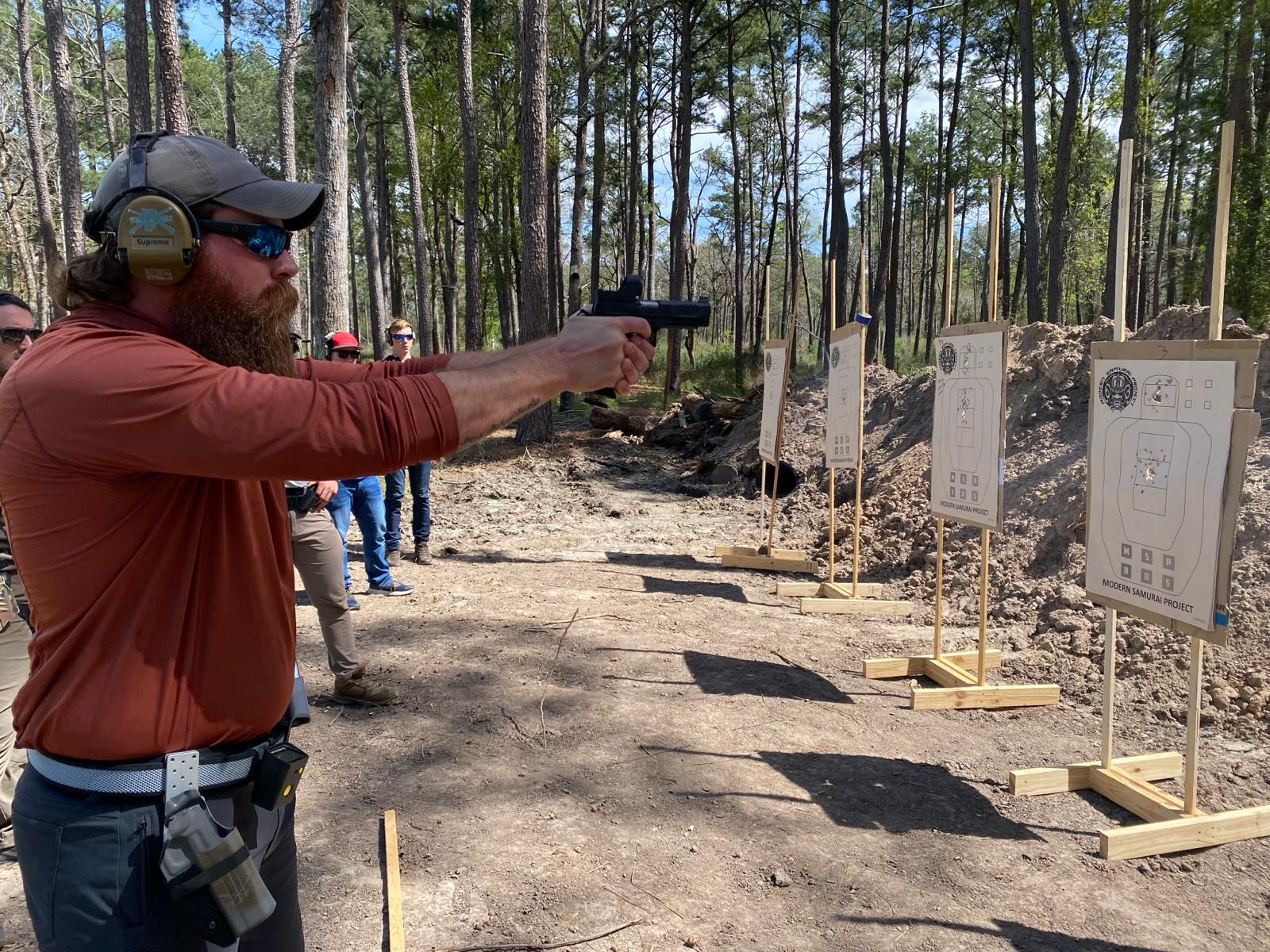I just wrapped up Hunter Freeland’s Two-Day Red Dot Pistol Fundamentals And Performance course that was hosted at a private range in Huntsville, Texas. Hunter Freeland is one of MSP’s (Modern Samurai Project) most prominent instructors, so naturally, the curriculum found in this two-day handgun class is all based on the official MSP coursework. I only met Freeland two months ago at an afterhours event during SHOT Show week in Las Vegas, but this past class was my first real chance to get to know him and what he’s all about. Although I didn’t take home an MSP Black Belt Patch, I walked away from this class with several new personal bests in shooting and draw times and much more knowledge and insights towards my own shooting.
COURSE OVERVIEW
The Two-Day Red Dot Pistol Fundamentals And Performance course is a pure handgun skills-and-shooting course for intermediate to advanced students. Students have the opportunity to shoot and earn the MSP Black Belt Patch at the end of both training days. Otherwise the course is evenly spread amongst both days, neither day was harder than the other but material was spaced out with enough time to lecture it, demonstrate it and run some drills. For the majority of us, round count was approximately 350 rounds per day. Freeland recommends 700 rounds of ammo in total, but I’d bring 800 or the full case just to be on the safe side. With the high price of ammunition today, it’s fair to point out that we weren’t shooting off cartridges for the sake of merely turning money into noise either.
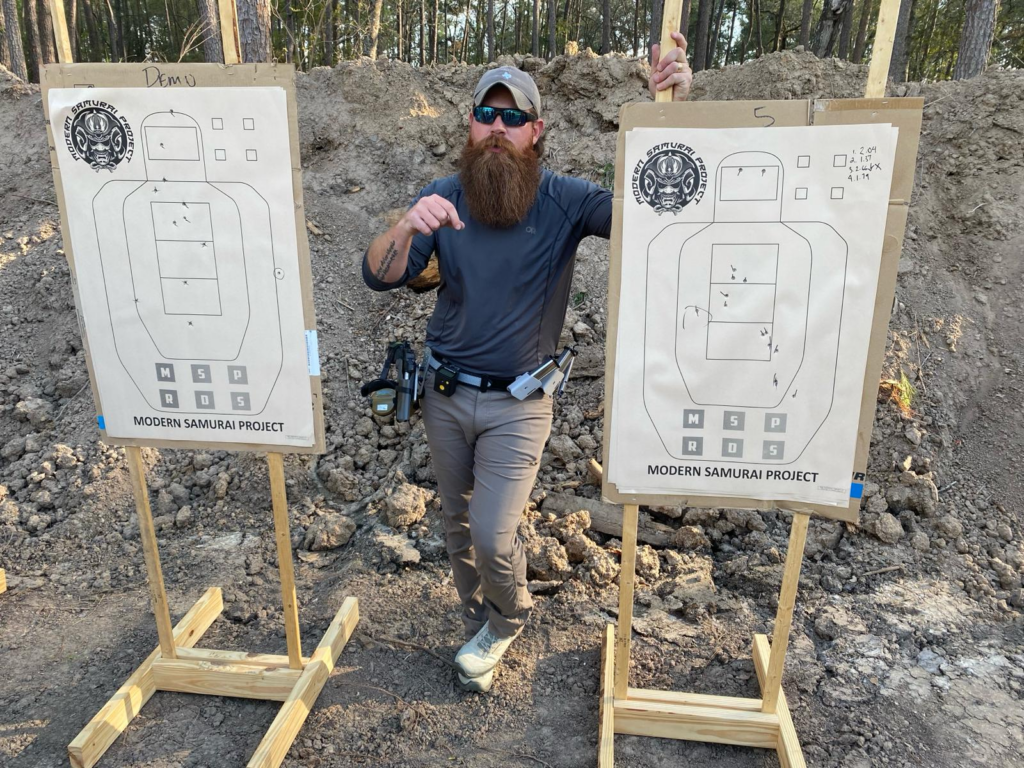
Advertisement — Continue Reading Below
Freeland spent the lion’s share of the first day going over the proper support-hand grip that’s necessary for shooting both quickly and accurately. This included the demonstration of proper strong and support hand tension, delving into the famous “Berm drill” as a proof of concept. Scott Jedlinski’s famous “wave” presentation also came up during this first day. The training drills and exercises we saw all depended on that proper two-handed firing grip foundation. After lunch, Freeland segued from the proper firing grip to drawing from the holster and we all burned plenty of reps working our draws.
DAY 2 WITH FREELAND
Day 2’s core topics were the nuances of trigger manipulation to a degree I had never seen before, namely the concept of finding the various “stopping points” along the trigger’s travel path until the actual break; this ties into trigger prep prior to making the shot. After plenty of coverage and reps with the proper grip, the draw and trigger manipulation, we moved on to shooting speed as it relates to the size of a target and how a shooter can use the movement of their dot in recoil to to time their trigger pulls.
Day 2 included more shots at smaller targets at 2-inch squares, especially as a measure of trigger control. There were also further shots at the A-Zone or NRA B-6 targets at 25 yards building off the same grip and trigger control concept. Whether B-6s or A-Zones, I was glad for all the additional 25-yard repetitions and exposure. Prior to conducting the final MSP Black Belt Patch assessment, the class covered the topic of shooting transitions–that is shifting gears between small and large targets and engaging them at the correct frequency to ensure a hit.
Advertisement — Continue Reading Below
Whether you’re modulating trigger speed or sight picture speed (red dot movement), don’t forget to keep that support hand properly tensioned!
OF WALTHERS & STACCATOS
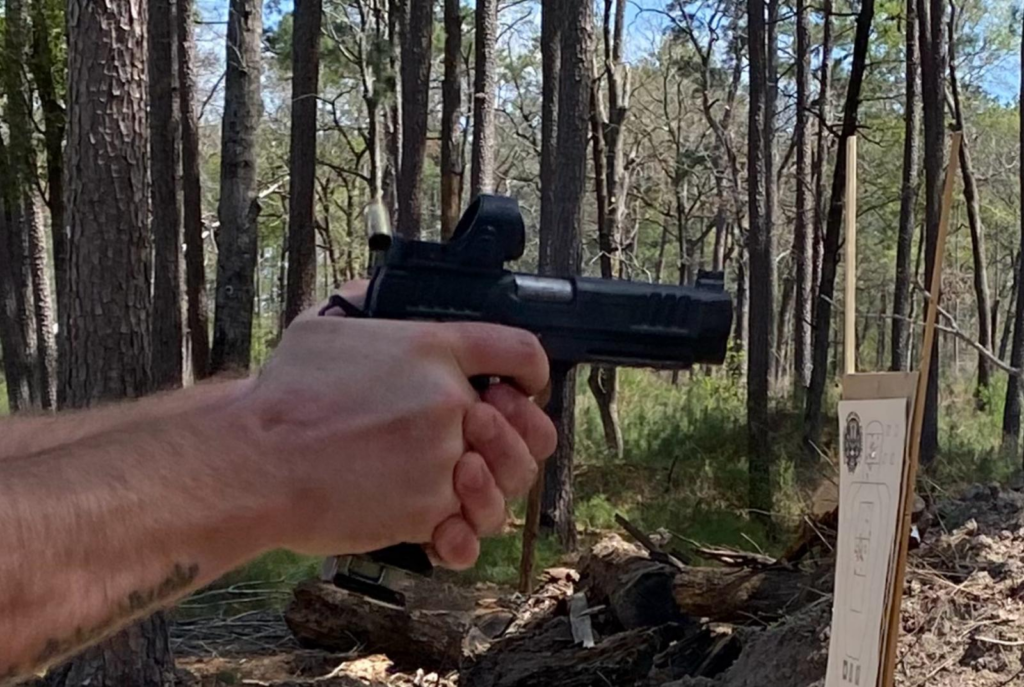
I brought both my standard full-size and Match Steel Frame Walther PDP to this performance shooting class. I shot the Steel Frame pistol with the Trijicon RCR on the first day, and the standard PDP with the Holosun 507COMP on the second day. Because I’d been shooting the steel-framed pistol so much (north of 1,800 by now), I wanted to go back and run the standard one in comparison; moreover, I definitely took advantage of the Holosun 507COMP’s bigger window when shooting for the Black Belt Patch. I used my “training/practice” handloads consisting of 4.5-grains of HP38 with a Berry’s 115-grain .356” bullet loaded to 1.150”. No issues to report for either my handloads or the pistols.
Advertisement — Continue Reading Below
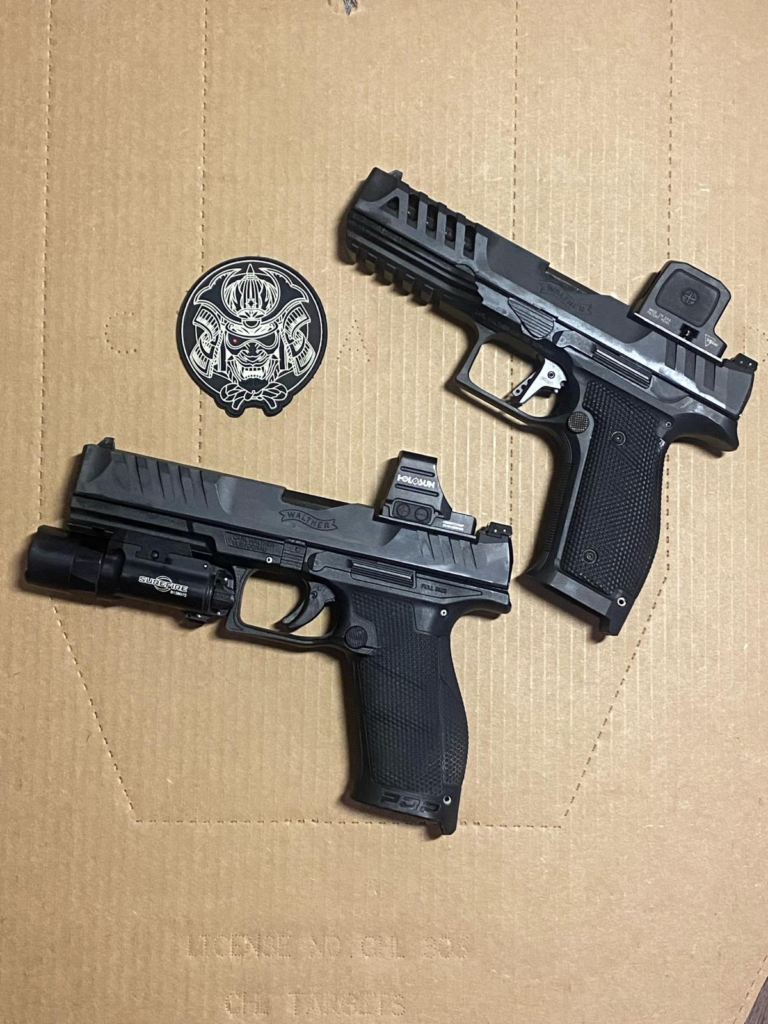
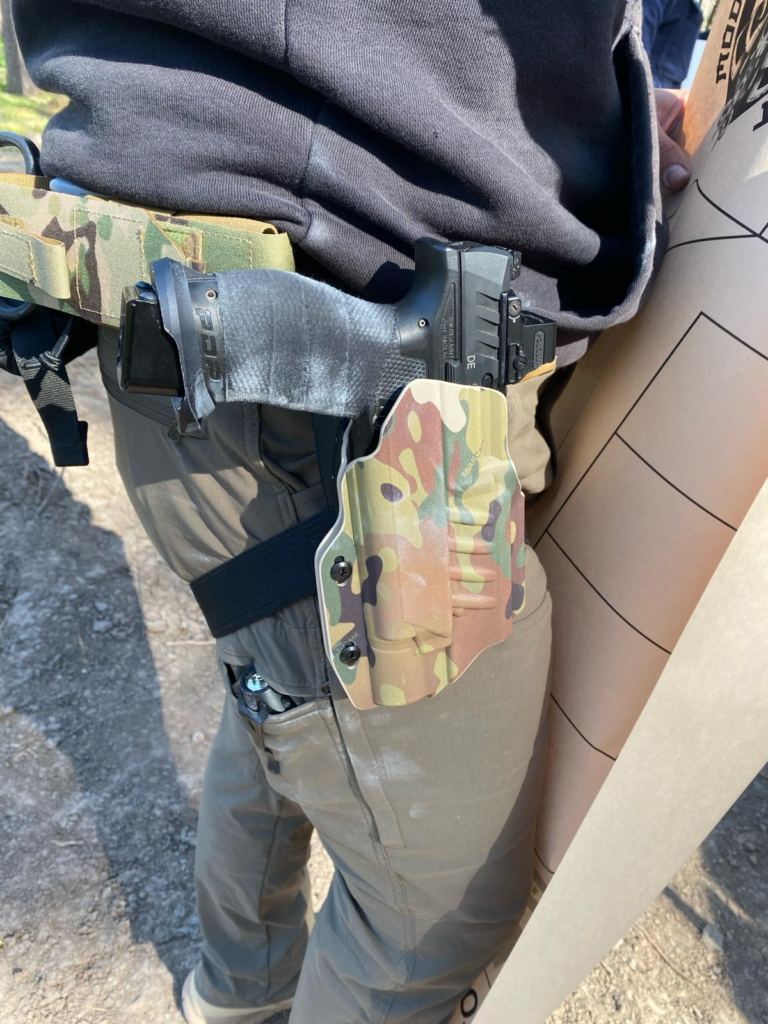
Besides the fact that I wasn’t the only one shooting a Walther PDP for once, Staccato 2011s and not Glocks, were the most popular pistols in class. One of the students was shooting a Staccato C2 from concealment with a PHLster Enigma holster to great effect while others including Freeland were fielding standard Staccato Ps. Freeland’s 2011 was of particular interest to me because he’s shot over 100,000 rounds with that particular gun. And even with the rebuilding and overhauling, this particular Staccato has apparently held up very well–with the finish and all. Other than the SRO, the pistol didn’t have much in the way of modifications besides a lighter recoil spring set up for softer 147-grain coated 9mm rounds.
Advertisement — Continue Reading Below
MSP BLACK BELT PATCH STANDARDS
The MSP Black Belt Patch evaluation is very straightforward. It’s shot on the standard MSP training target, and only has four parts; all four are fairly simple but come with strict time standards. A very strong grasp of handgun fundamentals and a fast draw are needed to clear it in a timely manner. Frankly, to even have a shot at the Black Belt Patch, the sub-second draw is a requirement. Students get two separate attempts at the end of each training day.
The evaluation kicks off with the “3-2” drill at 3-yards. This drill only takes five rounds and the shooter has to draw and shoot to the A-zone, then transition to put two shots in the headbox/index card above the A-zone in two seconds or less. This is followed by a 7-yard DTFS (draw to first shot) of a single round into the A-zone with a par time of one second. Afterward, one must shoot a Bill Drill in two seconds or less (this means a one-second draw to the first shot and then five additional splits at 0.20 seconds. The last portion of the MSP Black Belt Standards is a 25-yard A-zone DTSF with a par time of 1.5 seconds. Again, the best strategy here is having a quick draw and front loading the extra half-second into getting the correct sight picture.
PERSONAL BESTS
While I did not clean any of the four shooting portions that weekend, I almost had the 25-yard DTFS dead to rights. My time was 1.48 seconds, but I shanked the shot off to the left due to an error in support-hand grip tension. As I write this I can still visualize the red dot of my HS507COMP gently curving counterclockwise and to the left of the A-zone as the shot broke and shanked it right into the C-zone. Were I at half of a tenth of a second faster on the draw, I would have cleared the 3-2, as my best time was 2.04. In the heat of the moment, I accidentally fumbled the straight 7-yard DTFS thinking it had to go into the head-box only to count, which took me 1.53 seconds. Even with the regular A-zone I doubt I would have cleared the second long par time. Ditto for my Bill Drill, which came in a 2.39. While this is actually my personal best at the time of this writing, it’s still too slow for a Black Belt Patch.
Advertisement — Continue Reading Below
THE TAKEAWAY
After training with Freeland and getting to know him better, he’s the real deal. As an instructor, Freeland has no problem executing and demonstrating what he teaches students on demand–and to a high degree. The extent that this man knows about handgun shooting and techniques is astonishing because I’d never seen an instructor ready to dive-in into a lecture about the pros-and-cons of dot occlusion or whether Captains of Crush grip exercises were actually beneficial right in the middle of the firing line. Those are just two examples from a weekend course with plenty of other shooting topics and sidebars. It won’t be too long before Freeland has enough insights to write his own book on handgun shooting.
This two-day course felt like a continuation of one of the lessons I took away from my last pistol training class, with Green Ops a few weeks ago–especially on the first day. And this is a great thing because I got to explore the concepts directly from “the source.” Likewise, I noticed that Freeland was very forthcoming about other instructors or mentors who have helped shape his outlook and teaching–credit given where credit is due.
FINAL NOTE
The prospective student’s specific skill level isn’t as important as whether he or she can safely draw and shoot from a holster. As long as that basic competency is there, the student’s quality of instruction won’t be affected. Though the majority of students tend to wear battle belts with Safariland “bucket” type holsters, I managed to successfully shoot the entire course from concealment with my PHLster Floodlight2. The fundamentals of shooting a handgun are true regardless of the aiming system, but this is truly a class for a gun with a red dot. Between observing grip tension and trigger manipulations, I finally saw for myself what others mean when they talk about “sights whispering and red dots screaming.”
Advertisement — Continue Reading Below
